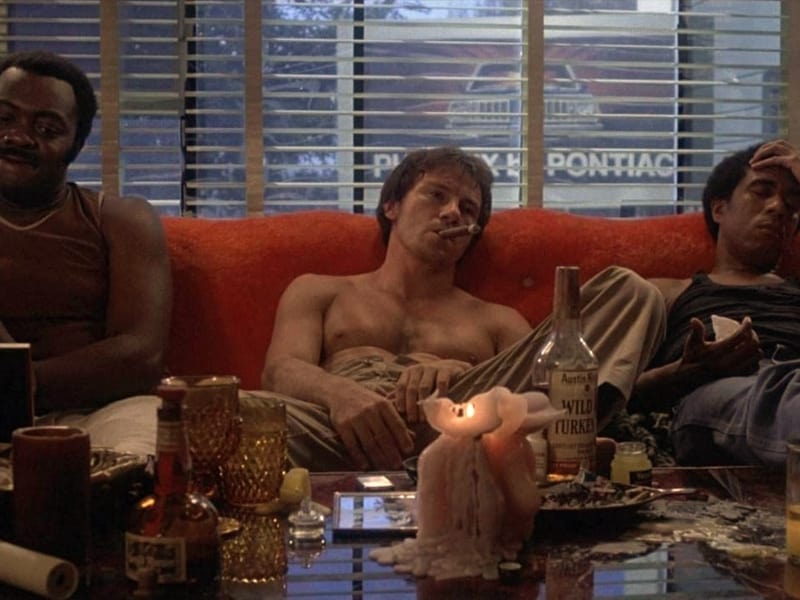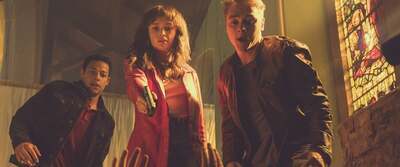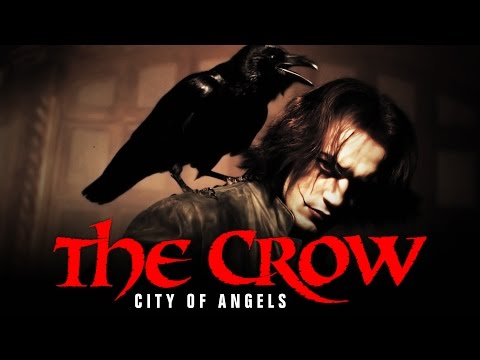25 Things We Learned from Paul Schrader’s ‘Blue Collar’ Commentary
Welcome to Commentary Commentary, where we sit and listen to filmmakers talk about their work, then share the most interesting parts. In this edition, Rob Hunter listens to Paul Schrader discuss his directorial debut, Blue Collar.
Paul Schrader‘s been a part of the American movie scene since writing 1974’s The Yakuza, and he’s remained a compelling voice through films as varied as American Gigolo (1980), Affliction (1997), Auto Focus (2002), and First Reformed (2017). He decided early on in his career, after seeing four scripts of his directed by others, to take a seat in the director’s chair himself. The result was a terrific American drama featuring one of Richard Pryor‘s best dramatic performances, Blue Collar.
Keep reading to see what I heard on the commentary for Schrader’s Blue Collar.
Blue Collar (1978)
Commentators: Paul Schrader (writer/director), Maitland McDonagh (journalist)
1. The opening credits shots include an overhead one lifted from Sergei Eisenstein’s Strike (1925).
2. The automobile plant scenes were filmed at the Checker Cab plant in Kalamazoo, Michigan. “We tried to go to every auto plant in the US and Canada, and we were turned down uniformly.” This plant finally relented because they were having some labor issues and thought the shoot would help settle and calm the workers.
3. The origin of the Blue Collar script started with a young man who brought an idea to him about his own father who worked in an auto plant before committing suicide. Schrader told him a better idea was a story about workers who rob their own union. “After he left I called up my brother and said ‘there was a guy over here and I gave him a very interesting idea, but I don’t think he’ll ever write that idea. Let’s you and I write it.” He and Leonard Schrader wrote the script, but once the film went into production the man, Sydney A. Glass, returned claiming he had supplied the initial idea so they gave him a “source material” credit.
4. One theme that Schrader returns to again and again in his writing is exploring why people act against their interests.
5. Schrader notes that Richard Pryor had done one previous serious role in Lady Sings the Blues (1972), but the comic actor had actually appeared in more than a few serious films, albeit in smaller roles. These include The Mack (1973), Hit! (1973), and Some Call It Loving (1973). The filmmaker was trying to find financing and having trouble, but bringing on the rising star helped dramatically.
6. Pryor was prone to improvisation and only “good” for the first few takes. “By the fourth or fifth take he would already be downhill because he’d be running out of gas.”
7. He was met with resistance in trying to sell the film as being about “two Black guys and a white guy,” as people would respond asking if he meant to say “two white guys and a Black guy.”
8. Schrader says he used to refer to Pryor as suffering from “the big and Black problem.” He explains that the performer wanted to be a big success while still holding onto Black politics. “He would turn on people, he would instigate racial situations, and everyone hated it.” The next day he would be a joy and ingratiate himself with everyone. The pendulum swings led to confrontations both verbal and violent.
9. Yaphet Kotto first caught Schrader’s attention in 1972’s Across 110th Street.
10. The shot/scene around 14:37 led to a fight between Pryor and Harvey Keitel. The latter would take several takes to warm up, so they’d shoot him with a stand-in reading Pryor’s lines. “When Harvey was all warmed up you brought in Richard and you shot Richard’s first take.” Apparently Keitel started riffing and Pryor joined in leading to a big, off-script rant that, while funny, possibly looked like showboating to Keitel who then moved an ashtray and spoke directly into the camera to scratch the take. “Even before I cut, Richard was on Harvey, fists were flying,” and soon Pryor’s bodyguard and Schrader himself entered the fray. “It wasn’t the only time things happened like this on the film.”
11. The film was shot over forty days which was more than he had on Affliction, which was the last film he made prior to this commentary track.
12. He essentially apologizes for the scene in which Zeke (Pryor) is visited by an IRS agent and it’s revealed that he’s been scamming welfare by pretending to have twice as many kids as he actually does. It was funny to him at the time he wrote it, but “today in retrospect it’s quite offensive.” He adds that it’s difficult to watch now, but rather than pursue the matter McDonagh decides to ask if the IRS actually visited people at home like that.
13. Pryor had bad things to say about Schrader after the film’s release including accusing the director of “putting him back on cocaine, which was a bit of a stretch.” Two decades later, though, Pryor asked if Schrader would adapt his autobiography. “It’s not something I could do while he’s still alive, because as long as there was one body part of his that was still functioning he’d come after you.”
14. Schrader was overwhelmed as a director and leaned heavily on his cinematographer (Bobby Byrne) and script supervisor (Wallace Bennett).
15. “I hired three bulls and asked them come into a china shop, and I promised each of those bulls that they would be the lead actor.” Pryor, Kotto, and Keitel each figured out soon enough that they weren’t the lead, and it led to chaos. Keitel saw himself as having to play straight man to Pryor’s shenanigans, Pryor saw himself as “the colored friend” of Keitel’s character, and Kotto felt secondary to both men. “It became a real ego struggle about who would win the day,” and that was every day.
16. The party scene was among the last sequences filmed, and by that time there was ample drug use among the cast including Pryor’s return to cocaine. “They were coking it up on set.” The scene featured Sweet n Low as a substitute, but he discovered later that the actors were actually using between takes.

17. The shot above of the three leads on the couch was the final shot they filmed, and it required intense wrangling on Schrader’s part to get the three actors to sit together. That’s a recurring theme throughout the commentary as he reveals that numerous scenes were shot without closeups or additional coverage because calling cut meant the actors would get up and leave immediately.
18. Jerry’s (Keitel) house features very visible religious iconography, and Schrader feels it’s overdone. He mentions that Martin Scorsese is making his script for Bringing Out the Dead (1999) and the two had already butted heads over the Catholic imagery and paraphernalia in the film. The novel it’s based on is heavy with the stuff, but Schrader told the director they’d been reliant on the imagery for too long and for too many of their films.
19. Keitel walked at one point mid-film and went to the airport to fly back home, but thankfully his agent talked him into returning to the set.
20. Schrader says this is his first viewing of the film since its release roughly two decades prior. “It’s strange to watch it after all these years. I don’t go back and watch films I’ve made because it’s a lose/lose proposition.” He adds that if they’re good you wonder what happened to the talent you once had, and if they’re bad you realize you never had talent at all.
21. He decided to direct Blue Collar because he didn’t feel as if he was in charge of his creative life. “Once I was able to direct, I was able to go back to writing for others without feeling incomplete.”
22. Universal did minimal marketing for the film’s release and essentially folded it in with their marketing for Pryor’s other Universal release, Which Way Is Up? (1977). It died in theaters fairly quickly as people realized it wasn’t another Pryor comedy, but positive reviews helped launch Schrader as a director anyway.
23. Smokey’s (Kotto) death scene is a favorite of many because it’s dramatic and satisfying, but “on a realistic level it has zero credibility.” He says it’s not how the painting works, and you probably couldn’t kill someone this way either. “It shows the power of movies, because if it’s the right emotion and the right action at the right time, people set their more realistic sensibilities aside and go with it.”
24. The car chase scene with Jerry being followed features the ominously increasing sound of bees. Composer Jack Nitzsche used a prototype synthesizer with digitally recorded sounds to create the effect.
25. The freeze frame ending was planned from the start as a “classic social realist poster.”
Best in Context-Free Commentary
“It’s so spooky watching Richard. He was the unhappiest person I ever met in my life.”
“You could be sure if on one given day he was extremely nice to everybody, the next day he was gonna walk in and kick someone’s ass.”
“If this is what directing was, I wanted no part of it.”
“I learned that day never to put somebody so white next to somebody so Black.”
“I’m not a big stickler for political correctness.”
“I really didn’t figure out how to direct until my third film.”
“This is the scene where Richard hit Yaphet with a chair.”
“As a writer you look back and you wince.”
“I just wish I could rewrite it.”
“More people want to make films than want to see films.”
“Plot 101. Make ’em nice so you can kill ’em.”
Final Thoughts
This is, perhaps unsurprisingly, a fantastic commentary track with one real caveat — Schrader’s frequent use of the n-word. He says it six times, and while it’s used in the form of references as opposed to casual utterances it’s still jarring. He mentions that Pryor went through a period where he wouldn’t say it, and Schrader says it twice while sharing that information. Later, he talks about how other people viewed the film’s characters and uses the word a few more times. In each instance he’s essentially referring to someone else’s use of the word, but it’s clear that he has no qualms about using it himself. Context matters I suppose, and as a reminder this commentary is roughly twenty-five years-old, but still, his language is unnecessary and left unchallenged.
Schrader is a “give no shits” kind of filmmaker, for better and worse, but his observations on Blue Collar are honest and never less than engaging. He points out weaknesses in his script, shares his inexperience, and offers up anecdotes involving his cast that are both entertaining and crazy. McDonagh unfortunately doesn’t add much, as while she’s a strong writer in her own right she seems a bit out of her element here. Still, it’s a great listen and highly recommended.
Read more Commentary Commentary from the archives.





